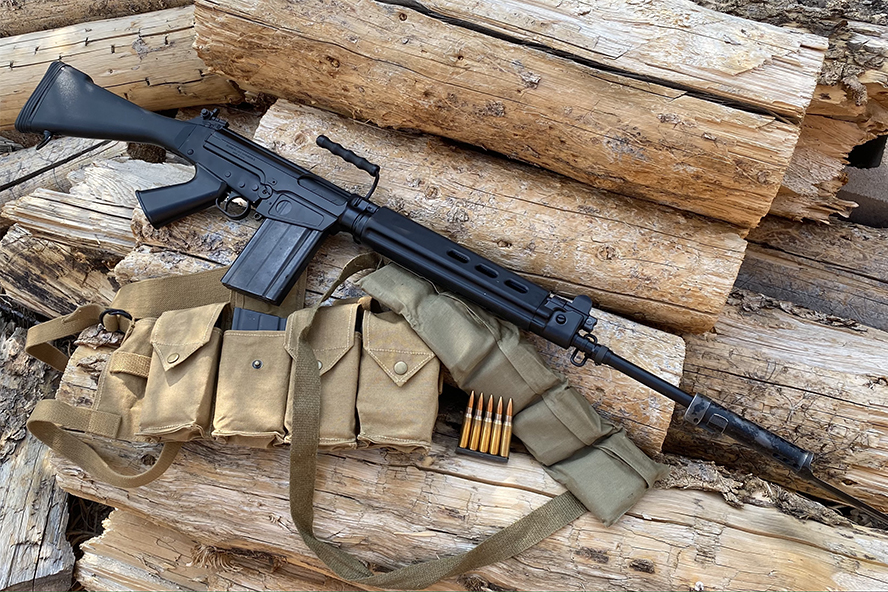
I recently reviewed the Century Arms Centurion 14 pistol, a Browning Hi-Power clone. That led me to mention the fact that while the Hi-Power was John Moses Browning’s idea, the actual working handgun, which was adopted by Great Britain as the P35, was made a reality by Dieudonné Saive. Mr. Saive was a designer and engineer working at Fabrique Nationale, the famous Belgian arms arms manufacturer who had worked directly under Browning.
Fans of the Hi-Power/P35 know Dieudonné Saive as the design genius who made Browning’s 9mm single-action pistol a success. However, those military minded folks who appreciate a genuine fighting rifle know Dieudonné Saive as the inventor of the FN FAL.
Cold War Battle Rifle
With the close of World War II, the world split into two large factions, those who supported the Soviet Union and communism (the Warsaw Pact) and those who supported some form of democracy or republicanism. The latter formed the North Atlantic Treaty Organization or NATO.
During WWII, the allied nations frequently ran into logistical troubles as every country had their own preferred firearms and cartridges to go with them. NATO came up with the Standardization Agreement (STANAG) and decided that all of the allied nations would use the same small arms ammunition. One of the first STANAG-approved cartridges was made for fighting rifles and it was adopted as the 7.62x51mm NATO. With a consensus on the cartridge, firearms makers began producing self-loading, magazine-fed fighting or battle rifles.
With Mr. Saive in charge of the project, Fabrique Nationale produced the FAL (Fusil Automatique Leger or Light Automatic Rifle) in 7.62mm NATO caliber and it was rapidly adopted by numerous NATO countries and their allies fighting against the evils of communism.
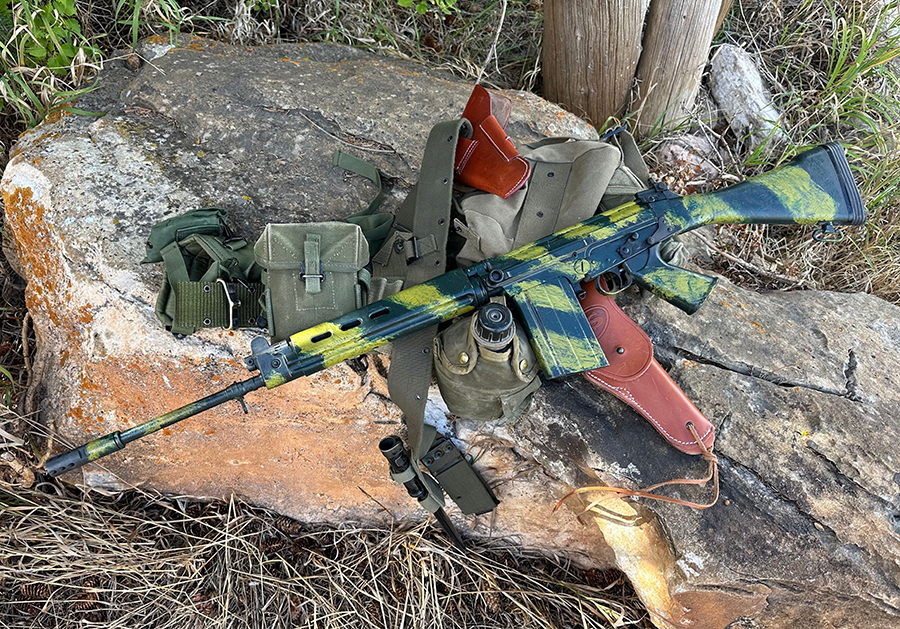
The United States, being stubbornly different, adopted the M14. The West Germans initially purchased and adopted the FN FAL calling it the G1 (Gewehr 1), but it was quickly replaced by the HK G3. The G3 was based on improvements made from the original Spanish CETME rifles. Despite the competition, the FAL in its various forms became arguably one of the most popular 7.62 NATO battle rifles ever made and earned the nickname, “The Right Arm of the Free World.”
Since it was released in 1953, numerous countries have produced licensed copies of the original FAL rifle. The most notable nations have been South Africa, Austria, the UK, Canada, and later the United States, though there have been many others. Depending on the nation of origin, the FAL had other names such as the R1, the L1A1 (L1), and the C1A1 (C1). The Austrian version was called the Stg58 and the United States version built by DS Arms, is the SA58.
The DS Arms SA58
FN Herstal officially stopped making the FAL in Belgium in 1988. Therefore, original Belgian-made rifles are in high demand and hard to come by, particularly because the military versions were select-fire with a full auto option. All of the literature I have read indicates that soldiers in the field rarely used the full-auto option for two reasons; 1) unless they were on a bipod, the rifles were difficult to control and 2) being magazine fed, the standard 20-round version and even the rare 30 round mags ran dry too quickly.

If you want to own an original design FAL rifle today and live in the United States, your choice is to buy the SA58 from DS Arms. The SA58 is a faithful metric reproduction of the Belgian rifle and uses the same magazines and parts as the original. Yes, there are “imperial” or “inch pattern” FAL rifles made in the UK and Canada, but let’s stick with the metric version upon which the SA58 was based.
The rifle featured in this review is the DS Arms “Bush Warrior” model, the closest new model to the guns that were used in the Rhodesian Bush War. Let’s consider the gun’s specifics . . .
Standard Configuration Includes:
- 18″ Premium Standard Profile Barrel.
- Barrel Features Bi-Pod Cut & Front Sling Swivel.
- 7.62 x 51mm NATO Chamber & Bore.
- Barrel Features a 1:10 Twist Rate.
- Barrel Is Threaded 9/16×24 Left For Traditional FAL Muzzle Devices.
- 4140 Fully Machined & Heat Treated Cast Steel Type 3 Carry Handle Cut Receiver.
- Belgian Style Combo Device Flash Hider.
- Sand Cut Enhanced Fixed Stock Carrier.
- Left Side Non-Reciprocating Metric Cocking Handle.
- Traditional Metric Pistol Grip.
- U.S. Made Glass Filled Nylon Reinforced Full Length Handguards.
- U.S. Made Glass Filled Nylon Reinforced Humpback Buttstock.
- Forged 7075-T6 Aluminum Lower Trigger Frame.
- Traditional Fixed Stock Operating System.
- Fully Adjustable Gas System.
- Short Stroke Piston Design.
- Stainless Steel Gas Piston.
- Elevation Adjustable Front Sight Post.
- Holland Style Rear Sight Assembly – Windage Adjustment Click Screw Setting.
- Rifle Features A Matte Black DuraCoat Finish On The Receiver & Top Cover Giving This Rifle Clean Black Lines.
- 20 Round Metric Magazine.
As you look closely at the rifle I have here, you will notice a couple of unusual features. On the right side of the receiver you will notice a one-inch hole punched through it. This is an homage to the South African rifles that were “sterilized” by removing the SA lion crest before being sent over the border. The South Africans openly supported the Rhodesians for the first half of the war and then not so secretly supported them to the end.
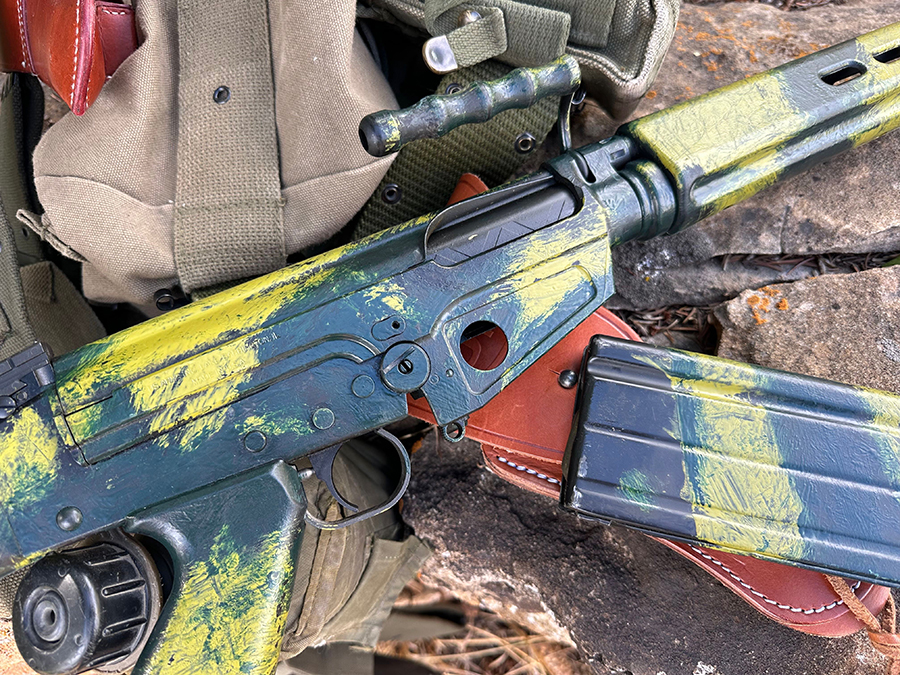
The original rifle arrived from DS Arms with a black Duracoat finish. To add to the rifle’s authenticity, I ordered a “Rhodesian baby poop” camouflage refinishing kit from Arizona Response Systems. If you’re a history buff, you will know that one of the things that set the authentic Rhodesian FAL/R1 rifles apart is the jungle green/baby poop yellow camo patterns that were applied by the end users with actual paint brushes, not air compressors. If you look at photos from the early stages of the 15 year Rhodesian Bush War the R1 rifles will be all black, then as time went on, more of the camouflaged versions are seen.
Range Time
As this is a fighting rifle, I wanted to feed it with fighting ammunition. The normal .308 Winchester that you buy from your local sporting goods store will work in the gun, however I wanted the real deal.
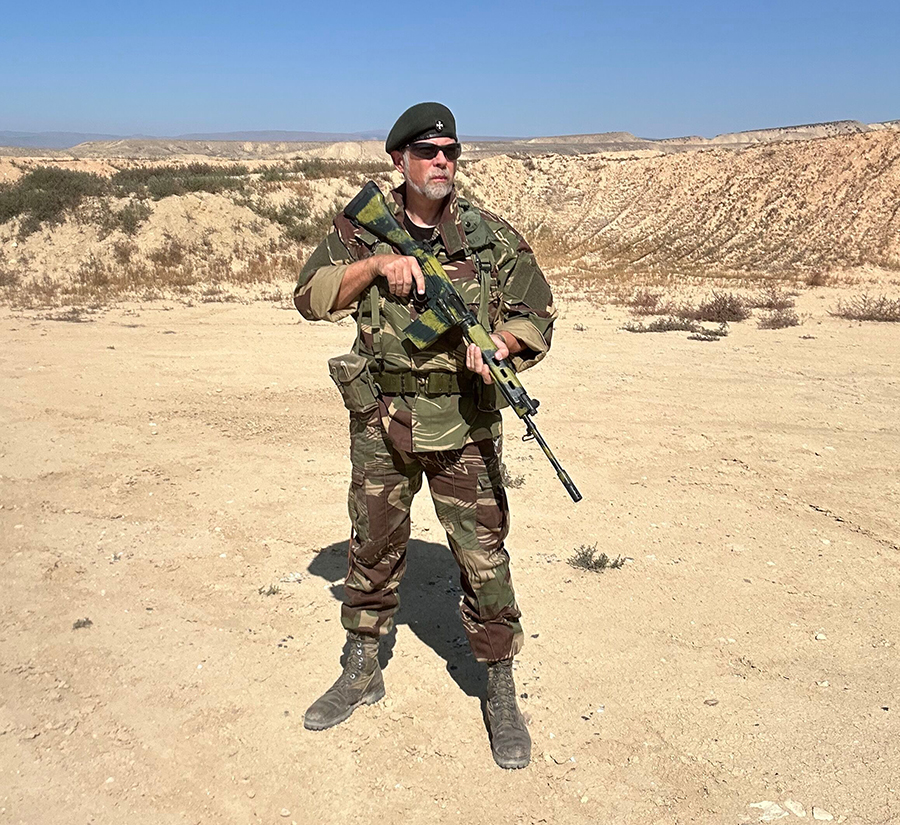
Shortly after I ordered the rifle from DS Arms, I received an email notifying me that they had “Hirtenberger” 7.62x51mm NATO ammunition in green ammo cans packed in bandoliers on stripper clips. This is the 147 grain FMJ ammunition that was made for the FAL, and the G3 and other battle rifles of the time. The Hirtenberger is rated at 2751 feet per second with 2428 foot pounds of energy. It’s this ammunition that the Rhodesian light infantry used as a sledgehammer against communist rebels.
When I put the rifle on paper at 100 yards, I found that from a rest, my shots were clustering in two-inch groups using the standard iron sights. From the factory, at that distance, my groups were about three inches left of center. The rear sight is adjustable for both elevation and windage so I added a few clicks right.
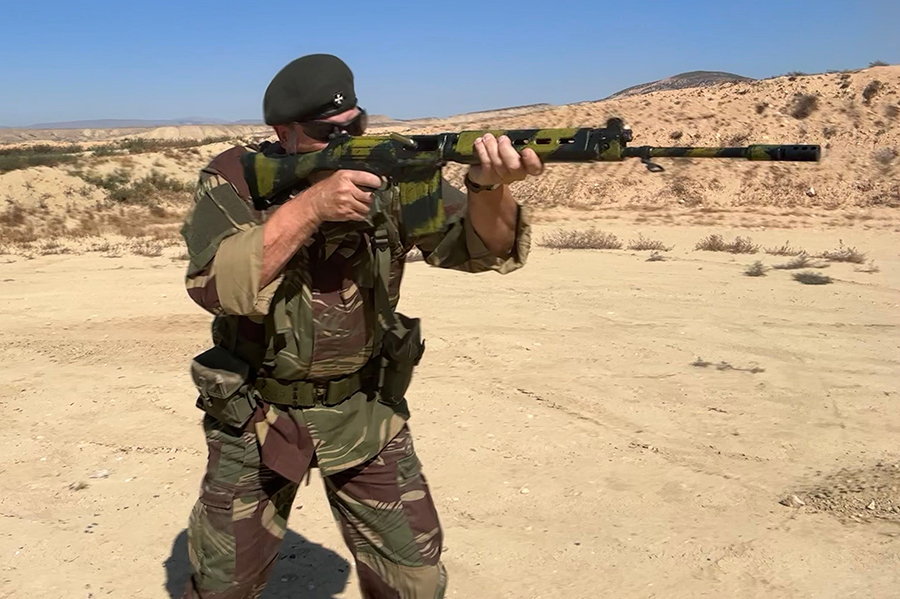
For those who think a 7.62 NATO rifle is going to beat them up, fear not. Felt recoil is naturally more than your favorite AR, but it’s not a killer. Put the stock into your shoulder, lean into it and you’ll be fine.
OpEd Time
If you will allow me a moment to editorialize, as someone who is getting long in the tooth and has been paying attention to history for about 40 years or so, I have witnessed military spending that goes from frivolous to criminally reckless. I find it to be supremely insulting that during a time when many Americans are having to decide whether to fill up their grocery carts or their gas tanks — but not both — that the US Army is planning to spend hundreds of millions, if not over a billion dollars on new “next generation squad weapons.”
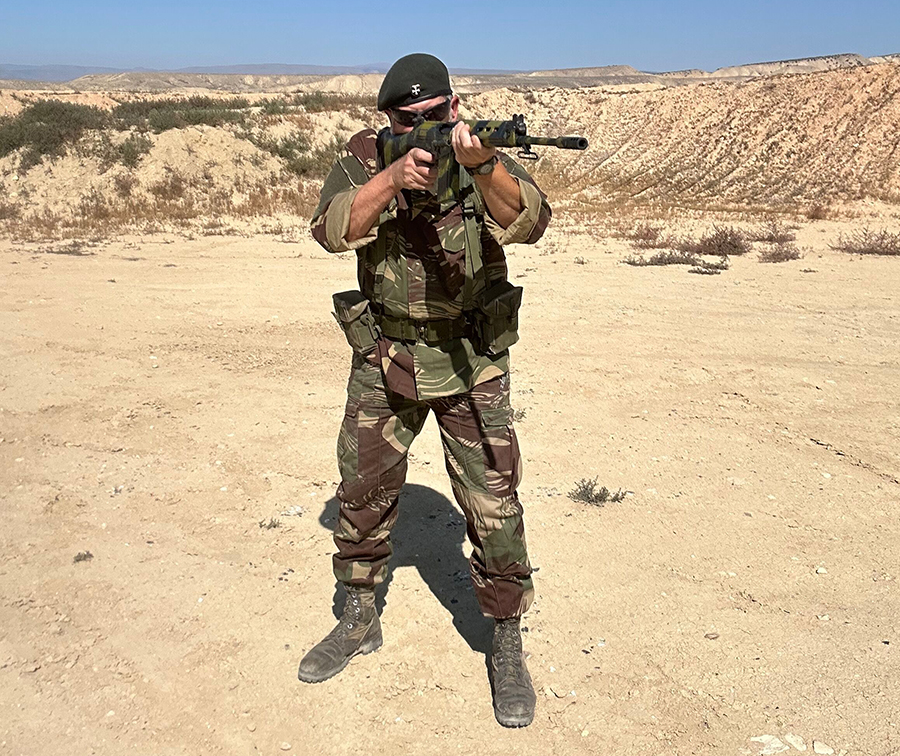
According to the Army, after over fifty years of using the 5.56mm NATO cartridge, it’s now no longer powerful or lethal enough. This is after they dismissed the 7.62x51mm NATO round because you could carry more rounds per pound of 5.56 and the 5.56mm had less recoil.
Now that the Army wants a new toy, fewer rounds per pound is now fine again and the new 6.8mm cartridge is said to have comparable recoil to 7.62mm NATO. We won’t bring up the fact that weapons experts have pointed out that the new high pressure cartridge is a “barrel-burner” and retail priced at around $3 per round compared to $1 per shot for FMJ 7.62mm NATO. The new MCX-SPEAR is two pounds heavier than the M4.
Also, as of press time, no one has been able to explain how the Army’s new toy and cartridge fits into the STANAG protocol. We haven’t heard of any other NATO allies adopting the guns or ammo yet. All the gun geeks in the firearms media seem to be so excited about something new that no one wants to point out that this project appears to be just one more attempt by the US Army to buy their way around training while at the same time swindling the American taxpayer out of more money.
If the Army really wants a cartridge that’s more lethal and powerful than the 5.56mm, the United States already has literal metric tons of 7.62x51mm NATO FMJ ammunition in storage. And there are proven battle rifle platforms for delivering it. But, I suppose that’s not as cool as spending money on a new toy.
#endrant
Paul G. Markel is a combat decorated United States Marine veteran. He is also the founder of Student the Gun University and has been teaching Small Arms & Tactics to military personnel, police officers, and citizens for over three decades.


Your last 3 paragraphs are spot on. While I liked the M16A2 we trained with, I always preferred 7.62×39. This new 6.5 or 6.8 is not practical. It will likely foul, jam, or induce failures because it’s a race horse. The additional folly is that the Grendel and the recent 6mm ARC fill the need for a more powerful round, longer range, and a compromise on weight. If the ceramic case technology was applied, the weight penalty would be minimized. Semper Fi.